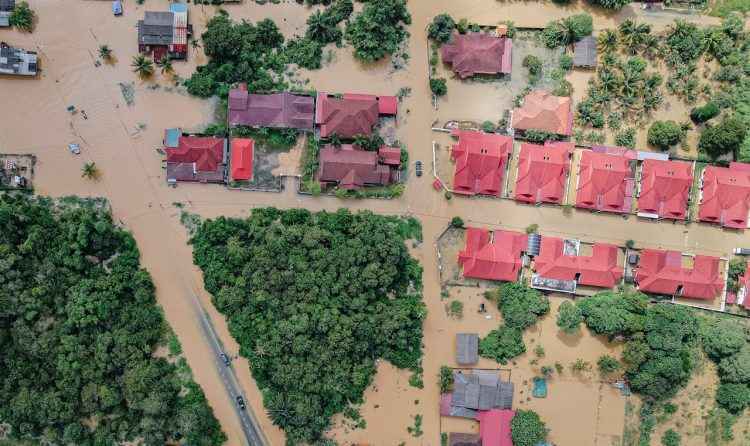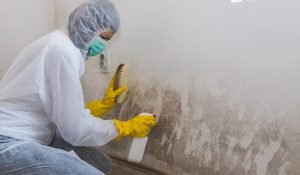
Floods can wreak havoc on commercial properties. The aftermath often leaves owners grappling with extensive damage and loss. Flood Damage Restoration is a critical process. It’s not just about repairing the visible damage. It’s about restoring the property to its pre-flood condition, ensuring safety, and minimising business disruption.
Commercial properties present unique challenges. The scale of damage is often larger, and the impact on business operations can be significant. Understanding these challenges is the first step towards effective restoration. This article aims to guide commercial property owners through the process of Flood Damage Restoration. We’ll explore the unique challenges faced and provide actionable solutions to address them.
Whether you’re a property manager, business owner, or stakeholder, this guide will equip you with the knowledge to navigate the restoration process effectively. Let’s dive in.
Understanding Flood Damage in Commercial Settings
Flood damage in commercial properties is a complex issue. It’s not just about water-soaked carpets or damaged inventory. The impact goes much deeper. Structural damage is a major concern. Floodwaters can weaken the building’s foundation, compromise walls, and damage electrical systems. This can pose serious safety risks.
Mold growth is another significant issue. If not addressed promptly, it can lead to health problems for employees and customers. It can also cause further damage to the property. Business operations are often disrupted. This can lead to revenue loss and impact customer relationships. The longer the restoration process, the greater the impact on the business.
Understanding the extent and nature of flood damage is crucial. It helps in planning an effective restoration strategy.
The Immediate Aftermath: What to Do First
When a flood hits, the first few hours are critical. Quick action can minimise damage and speed up the restoration process.
- Ensure safety: The first priority is to ensure the safety of all individuals. Evacuate the property if necessary and avoid contact with floodwater.
- Contact professionals: Reach out to a professional flood damage restoration service. They can provide immediate assistance and guidance.
- Document the damage: Take photos and videos of the damage for insurance purposes. Be thorough and cover all affected areas.
- Notify stakeholders: Inform employees, customers, and other stakeholders about the situation. Clear communication can help manage expectations and reduce confusion.
Assessing the Scale of Damage
Assessing the scale of damage is a crucial step. It helps in understanding the scope of restoration work needed. A professional assessment is recommended. Experts can identify hidden damage and potential risks that may not be visible to the untrained eye.
The assessment should cover all aspects of the property. This includes structural elements, electrical systems, plumbing, HVAC systems, and other critical infrastructure. The goal is to get a comprehensive picture of the damage and plan the restoration process accordingly.
Unique Challenges for Commercial Properties
Commercial properties face unique challenges when it comes to flood damage restoration. The scale of damage is often larger compared to residential properties. This is due to the size and complexity of commercial buildings. Commercial properties also have diverse needs. A warehouse, for example, has different restoration requirements than a restaurant or an office building. Each type of property requires a tailored approach.
Business operations are another concern. Any disruption can lead to revenue loss. Therefore, the restoration process must be efficient to minimise downtime. Insurance claims can also be more complex. Understanding the coverage and navigating the claims process can be challenging. Professional assistance can be beneficial in such cases.
Finally, commercial properties often have to comply with specific regulations and standards. These can affect the restoration process and must be taken into account.
Navigating Business Interruption
Business interruption is a major concern for commercial properties. When operations are halted, revenue is lost. This can put significant financial strain on the business. It’s important to have a business continuity plan in place. This can help minimise disruption and ensure a swift return to normal operations. Insurance can also play a role. Business interruption insurance can provide coverage for lost income during the restoration period.
Dealing with Large-Scale Damage
Large-scale damage is a common challenge in commercial properties. The size of the property can make the restoration process more complex and time-consuming. Professional restoration services are often necessary. They have the expertise and equipment to handle large-scale projects efficiently. The goal is to restore the property to its pre-flood condition. This requires careful planning, coordination, and execution of the restoration activities.
Safety and Compliance Concerns
Safety is a top priority during the restoration process. All activities must be carried out in a manner that ensures the safety of workers and other individuals. Compliance with regulations is also crucial. Commercial properties often have to adhere to specific codes and standards. Non-compliance can lead to penalties and further complications. Professional restoration services can help navigate these concerns. They are familiar with the regulations and can ensure that the restoration process is compliant and safe.
Professional Flood Damage Restoration Services
Professional flood damage restoration services play a crucial role in commercial property recovery. They bring expertise, equipment, and manpower to handle large-scale projects. These services can assess the extent of the damage accurately. They can identify both visible and hidden issues. This ensures a comprehensive restoration.
They also help with insurance claims. They can document the damage, assist with paperwork, and liaise with insurance companies. This can simplify the claims process for property owners. Moreover, professional services can ensure safety and compliance. They follow industry standards and regulations during the restoration process. This can prevent potential legal issues.
The Role of Technology in Restoration
Technology plays a significant role in flood damage restoration. It aids in assessing the damage, planning the restoration, and monitoring the progress. Advanced tools like thermal imaging can detect hidden water damage. This can prevent potential issues like mold growth and structural damage. Technology also helps in documenting the damage. Digital records can be useful for insurance claims and future reference.
Selecting the Right Restoration Partner
Choosing the right restoration partner is crucial. The right partner can make the restoration process smoother and more efficient. Experience in commercial properties is important. Each type of commercial property has unique needs. A partner with relevant experience can address these needs effectively. The partner should also have a good reputation. Reviews and testimonials can provide insights into their reliability and quality of work. A trusted partner can provide peace of mind during a stressful time.
Solutions for Effective Flood Damage Recovery
Effective flood damage recovery involves a combination of immediate action, strategic planning, and ongoing maintenance. It’s about restoring the property and resuming business operations as quickly as possible. The first step is to secure the property. This prevents further damage and ensures the safety of everyone involved. It includes turning off utilities, removing water, and drying out the property.
Next, a detailed assessment is needed. This identifies the extent of the damage and informs the restoration plan. It should cover both visible damage and potential hidden issues. The restoration plan should be tailored to the property. It should consider the type of business, the layout of the property, and the extent of the damage. It should also align with the business’s priorities and timeline.
Finally, ongoing maintenance is crucial. It ensures the longevity of the restoration work. It also helps prevent future flood damage.
Developing a Customised Response Plan
A customised response plan is key to effective flood damage recovery. It guides the restoration process and ensures all issues are addressed. The plan should be based on the assessment of the damage. It should outline the steps to be taken, the resources needed, and the timeline for the restoration. The plan should also be flexible. It should be able to adapt to unexpected issues or changes in the situation.
Prioritising Restoration Activities
Prioritising restoration activities is crucial. It ensures that the most important areas are addressed first.
The priorities should be based on the business’s needs. Areas that are critical to business operations should be prioritised. This can help minimise business interruption. The priorities should also consider safety. Areas that pose a risk to people’s safety should be addressed immediately.
Communication and Coordination
Communication and coordination are key during the restoration process. They ensure everyone is on the same page and the work progresses smoothly. Regular updates should be provided to all stakeholders. This includes the property owner, the business owner, the employees, and the insurance company. Coordination is also important among the restoration team. It ensures that all activities are aligned and there are no delays or conflicts.
Long-Term Considerations and Prevention
Flood damage restoration is not just about immediate recovery. It’s also about long-term considerations and prevention. This ensures the property is better prepared for future events. One key consideration is the property’s infrastructure. It should be maintained and upgraded as needed. This can help prevent future flood damage. Another consideration is the property’s flood response plan. It should be reviewed and updated regularly. This ensures it remains effective and relevant.
Finally, the property should be monitored for signs of water damage. This can help detect and address issues early, before they become major problems.
Maintaining and Upgrading Infrastructure
Maintaining and upgrading the property’s infrastructure is crucial. It can help prevent future flood damage. Regular maintenance checks should be conducted. This can help detect issues early and ensure the property’s systems are functioning properly. Upgrades should also be considered. This can include installing flood barriers, improving drainage systems, or using water-resistant materials.
Training and Preparedness for Future Events
Training and preparedness are key for future events. They can help minimise damage and ensure a quick recovery. Employees should be trained on the property’s flood response plan. They should know what to do in the event of a flood. The property should also have a contingency plan. This should outline the steps to be taken in the event of a future flood. It should be reviewed and updated regularly.
Conclusion: Restoring More Than Property
Water damage restoration Sydney for commercial properties is a complex process. It’s about more than just restoring the physical property. It’s also about restoring business operations and ensuring the safety and well-being of employees and customers. Choosing the right restoration partner, developing a customised response plan, and prioritising restoration activities are all crucial steps. They can help ensure a quick and effective recovery.
In the end, the goal is not just to restore the property to its pre-flood condition. It’s also to make it more resilient and better prepared for future flood events.



